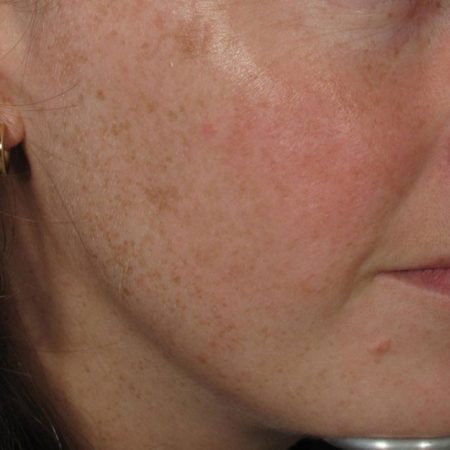Impact of Rosacea
For people living with rosacea, coping with the chronic flushing of the face associated with the condition can be troublesome. Dealing with rosacea can provoke avoidance of social activities and even lead to depression. As you age, dealing with rosacea skin can become more problematic. The flushing of the face associated with rosacea is caused by blood vessels in the face dilating. The repeated over-dilation of these blood vessels can become permanent, leading to the skin becoming ruddy and the enlarged blood vessels to be more visible through the skin.
Treatment Benefits

Quick Healing
Get back to your day

Minimal Discomfort
Safe, modern lasers

Highly Effective
Fade red skin for years
What is Rosacea?
Rosacea is a long-term skin condition causing redness on the face – usually the cheeks, nose and forehead. Rosacea is characterized by a tendency to flush and blush after exposure to triggers such as stress, sunlight, spicy foods and alcohol. When a person blushes, blood vessels on the face dilate. In those with rosacea, this happens so often that over time the blood vessels remain enlarged and the skin looks ruddy. Some rosacea sufferers go on to develop inflammatory pimples. In many, the eyes are affected too.
Types of Rosacea
- Mild – Occasional flushing, redness, small blood vessels may be seen on the nose and cheeks
- Moderate – Patches of redness persist, pimples, skin burning, stinging, visible blood vessels
- Severe – Diffuse facial redness, enlarged red, bumpy nose called Rhinophyma (mostly men), multiple bumps and/or pustules, enlarged blood vessels
- Ocular – May affect half of sufferers (1), eyes red, watery, burn, gritty, red eyelids, styes
What are the Causes of Rosacea?
- Genes
Environment
Unknown
Triggers
Sufferers have reported
- Sun exposure (81%)
- Emotional stress (79%)
- Hot weather (75%)
- Wind (57%)
- Intense exercise (56%)
- Alcohol (52%)
- Spicy foods (45%)
As with a number of other skin conditions, if you suffer from rosacea you may find that your flare-ups are often set off or made worse by a number of triggers. By recognizing and managing these triggers, it is possible to reduce the impact of rosacea on your life. With fewer flare-ups, the long-term damage incurred as a result of rosacea skin is lessened.
Ocular (eye) complications, and other less common events like enlargement of the nose (Rhinophyma) can be reduced by seeking timely care. Beyond learning to manage triggers such as stress, sun exposure, and alcohol, there are a number of treatments available that can offer relief from your rosacea.
Who is Affected by Rosacea?
- 2 million Canadians
- Mainly fair skinned people
- 30–50 year olds
- Women more often
Related Problems
- Self-consciousness
- Depression
- Mistaken for blood pressure problem or drinking problem
Potential Treatments for Rosacea
- Over-the-counter preparations – Riversol for Rosacea, mild cleansers and moisturizers, sunscreen
- Prescription medications – antibiotics
- Procedures – laser therapy
Note: Certain treatments for medical conditions considered to be elective and/or cosmetic are not covered by Medical Services Plan of BC.

Treatment areas
Face
Usually the cheeks, nose and forehead.